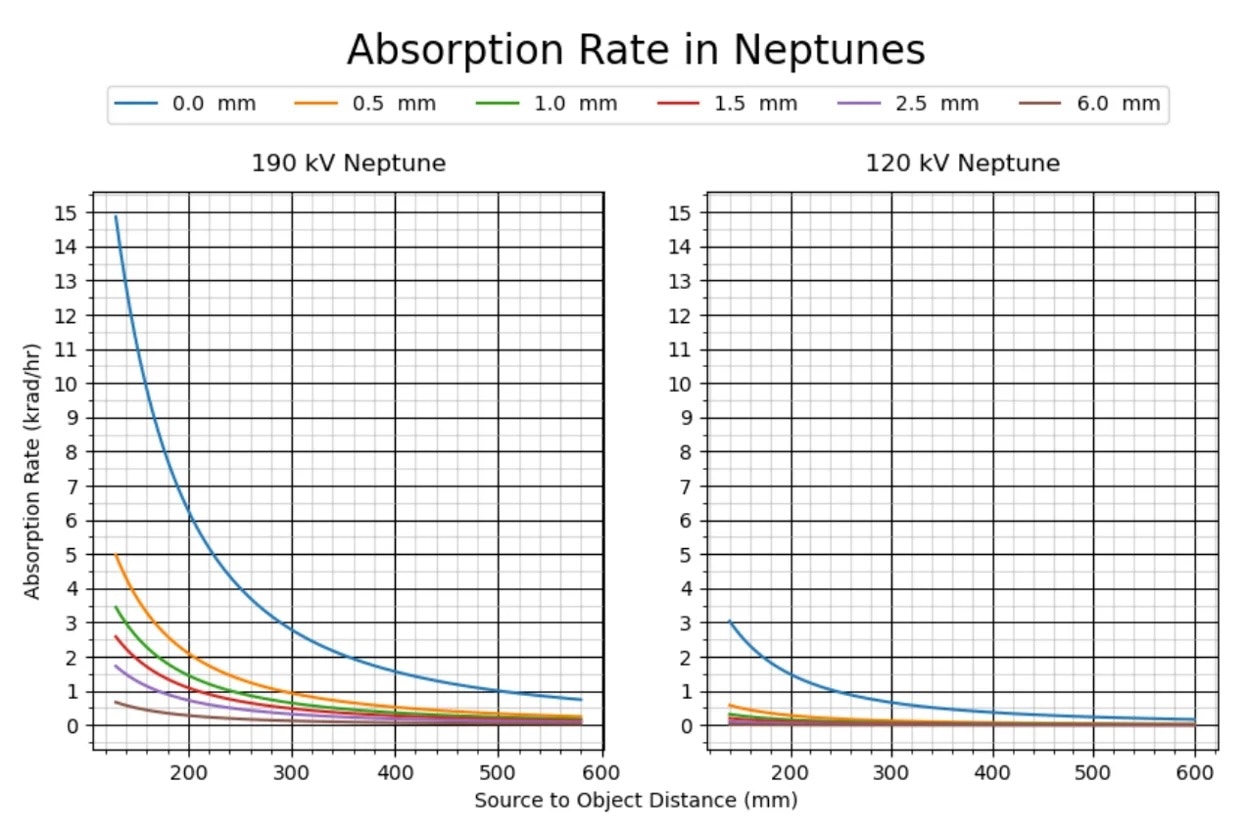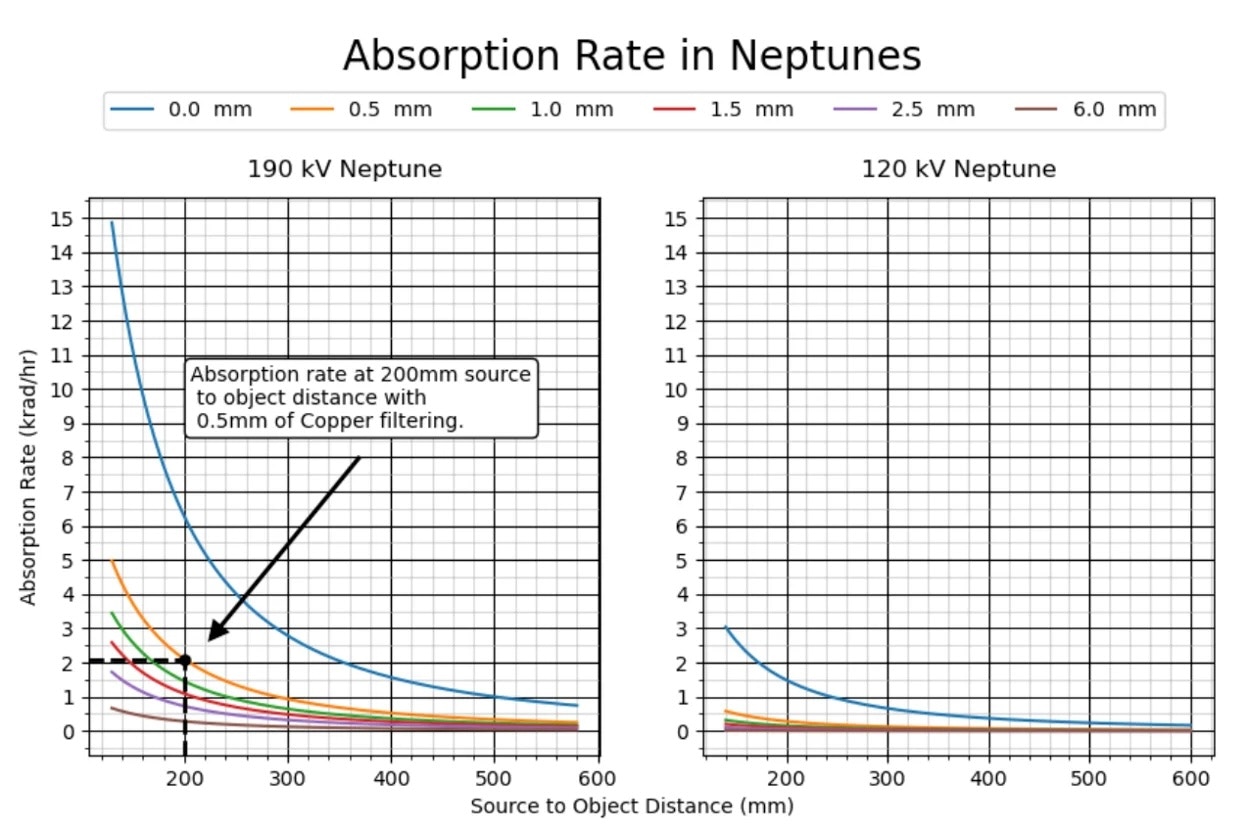- Scanner source energy
- Duration of the scan
- Number of times the device will be scanned
- Distance between the part and the source
- Amount of filtering used

| Type of Semiconductor Device | Total Ionizing Dose Threshold (krads) |
| Linear | 2-50 |
| Mixed Signal | 2-50 |
| Flash Memory | 5-15 |
| DRAM | 15-50 |
| Microprocessors | 15-70 |
Guidance for scanning electronics:
- In practice, most scans of electronic devices will use some level of filtering to mitigate the artifacts that arise from multi-material assemblies. Filtering reduces the amount of X-ray light that is used for a scan, reducing the dose, but longer scan times will typically be required when using filtering. Refer to the charts above to understand the impact of the level of filtering on your scan.
- While increasing magnification increases dose, it also increases fine feature resolution and reduces the chances of having to repeat a scan if the first scan does not resolve the target features.
- Once you have positioned the part, set a scan duration using Auto Scan to find the other scan parameters. Setting scan time in conjunction with the charts above will let you control the TID that the device receives.
Will my device be safe? A worked example
As can be seen from the table above, TID thresholds for many devices vary dramatically. While not always possible, the highest confidence method to assess the impact of X-rays on an electronic device is to find the TID limit experimentally. See this worked example to learn how to determine the TID threshold experimentally. Device: Flash Drive Scan Conditions:- Scanner Configuration: 190 kV
- Source to Object Distance: 200 mm
- Filter: 0.5 mm Copper
- Scan Duration: 3 Hours
- Use the dose absorbance charts above to determine dose at the scan conditions. In this example, the scan will be conducted on a 190 kV Neptune at a source to object distance of 200 mm with 0.5 mm of Copper filtering. This corresponds to an absorbed dose rate of approximately 2 krad/hr. A 3 hour scan would result in 3 hr * 2 krad/hr = 6 krad of dose.

- Scan the device in 1 krad increments and subject the device to functional testing in between doses. In this example , this would mean scanning the device in 30 min increments.
- Continue until the device fails functional testing. The TID at which the device fails testing is an experimentally-derived dose limit to which a margin of safety should be applied. This margin can be itself experimentally determined by repeating the above procedure to build statistics about TID for the device.